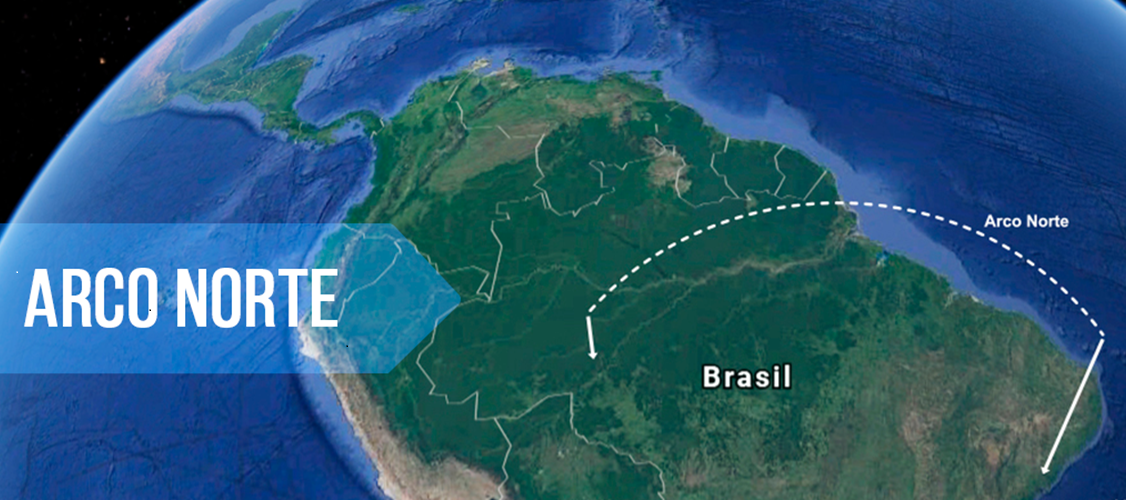
Climate Woes Cloud Prospects for Brazil’s Northern Arc Ports
Sep, 03, 2024 Posted by Gabriel MalheirosWeek 202436
The worsening climate crisis is raising concerns not only for Brazil’s agricultural output but also for the country’s exports, particularly those shipped through the Northern Arc ports, which have gained a growing share of Brazil’s total in recent years.
This year, the climate situation remains severe and is expected to disrupt grain transport via waterways. While grain production continues to rise in the Central-West and Northern regions, the logistics of shipping are becoming increasingly vulnerable to extreme weather events.
“We are operating at the limit, and nothing can go wrong,” says Elisângela Pereira Lopes, Technical Advisor for the National Infrastructure and Logistics Commission of CNA (Brazilian Confederation of Agriculture and Livestock).
Grain shipments through some Northern Arc ports are already down this year, though the full impact of the climate crisis is expected to become more evident as the season progresses.
According to Elisângela, the situation hasn’t been worse so far, mainly because weather conditions have already significantly impacted crop yields.
The Central-West region, Brazil’s largest grain producer, harvested 67.8 million tonnes of soybeans this year, a 13% decrease from last year.
Corn production is also expected to decline by 12%, with total output forecast to drop to 68 million tonnes, according to estimates from Conab (Brazil’s National Supply Company).
In 2022, thanks to record production, grain exports from Northern Arc ports exceeded those from the Port of Santos. Last year, part of the Central-West harvest had to be rerouted to the Southeast and South due to navigability issues on key rivers.
This year, with a smaller harvest, Elisângela believes there won’t be a need to redirect crops from some Central-West regions to the Southeast and South ports, as was necessary in 2023.
However, she warns that the sector cannot continue to rely on logistics systems that are so vulnerable to weather disruptions. Cargo throughput has steadily increased alongside record production levels.
In addition to expanding railways, special attention must be given to the country’s waterways. Dredging and rock removal would allow for greater utilization of these water routes, benefiting both general cargo and grain shipments.
National infrastructure plans need to be implemented swiftly. “We can’t keep living with the uncertainty of next year’s navigability,” the advisor states.
The transportation sector also recognizes the need for predictability and is even willing to pay fees to ensure reliable waterway access. Two of the main bottlenecks are the Madeira River, which receives grain shipments from BR-364, and the Tapajós River, fed by BR-163.
According to Conab, the faster-than-expected drop in water levels on the Tapajós River in Pará will force barges to operate at reduced capacity earlier than anticipated this year.
In its logistics report, the government agency suggests that shipments may need to be rerouted to Santarém via roads or even Santos.
According to Conab, soybean shipments through the Northern Arc ports fell to 27.5 million tonnes between January and July. This accounted for 36.5% of the country’s total exports, down from 37.3% during the same period last year.
While the share of corn exports through Northern Arc ports increased in percentage terms, the total volume was lower due to the reduced harvest.
The chart below reveals Brazil’s top corn export ports from January to July 2024. The information was derived from DataLiner data.
Corn Exports Top Ports | Jan – Jul | 2024 | WTMT
Source: DataLiner (click here to request a demo)
From January to July, 4.1 million tonnes of corn were shipped through these ports, representing 49% of Brazil’s total corn exports. Last year, the share was 37%. Paranaguá saw the biggest decline in market share this year. The Paraná port exported 682,000 tonnes by July, just 6.5% of Brazil’s total. In the same period in 2023, the volume accounted for 19%.
Fertilizers
Fertilizer imports through the Northern Arc ports from January to July this year have already surpassed those through the Port of Santos. According to data from Secex and Conab, imports through the Northern Arc totaled 4.3 million tonnes in the first seven months of the year, 7.5% more than the volume handled by Santos. Paranaguá remained the leading port for fertilizer imports, receiving 5.5 million tonnes.
Source: Folha de S. Paulo
Click here to access the original text: https://www1.folha.uol.com.br/colunas/vaivem/2024/09/crise-climatica-gera-incertezas-nas-exportacoes-pelo-arco-norte.shtml
-
Economy
Nov, 13, 2023
0
Currency crisis in Argentina harms Brazilian exports
-
Other Cargo
Mar, 04, 2024
0
Santos Port serves as export platform for 95% of Brazil’s cotton
-
Coffee
Jan, 03, 2019
0
Port of Santos coffee exports rise 7.6%
-
Shipping
Jun, 30, 2022
0
First cargo ship leaves Ukraine’s occupied port of Berdyansk



